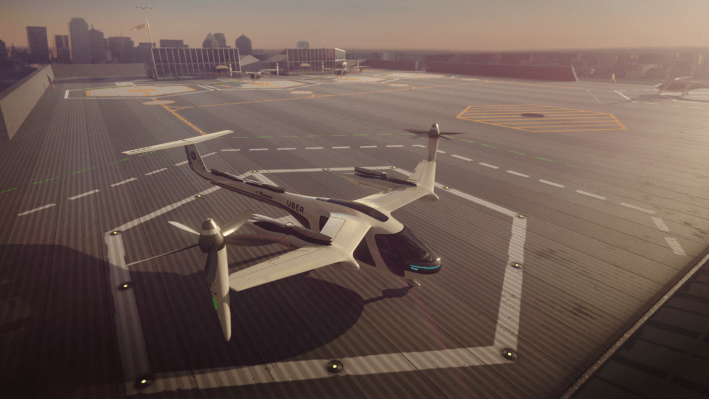Uber has inked a partnership with NASA over its flying taxi plans and says now it’s aiming to get demo flights up and running in Los Angeles by 2020.
Specifically it’s signed an agreement to work with the federal government agency over the development of unmanned traffic management at a low altitude. Which makes a change from being investigated by federal agencies.
As CNBC notes, NASA is already working with several other companies to develop traffic management for low altitude vehicles, including for drones.
“UberAir will be performing far more flights on a daily basis than it has ever been done before. Doing this safely and efficiently is going to require a foundational change in airspace management technologies,” said Uber chief product officer Jeff Holden in a statement. “Combining Uber’s software engineering expertise with NASA’s decades of airspace experience to tackle this is a crucial step forward for Uber Elevate.”
USA Today also reports Uber has inked an agreement with Los Angeles’ Sandstone Properties to develop roof-top take-off and landing terminals in the city.
Uber said today it’s intending LA to be its second US trial location, having previously named Dallas as a test city. It says its goal is to have a flying taxi service up and running in Los Angeles before the 2028 Olympics — and has also released a concept video showing an Uber user getting an elevator to a ‘skyport’ and then taking a flying taxi across the city.
The company is not intending to build any flying taxis itself but has previously announced partnerships with five aircraft manufacturers to lead the development and manufacturing of the necessary VTOL (vertical take-off and landing) aircraft.
Back in February Uber also hired NASA engineer Mark Moore, who worked at the federal agency as an advanced aircraft engineer to work on its flying taxi project. But obviously lots of barriers remain to actually launching a commercial service — not least safety considerations of operating such a service over densely populated urban centers.
The on-demand ride-hailing giant revealed its ambition to get build on-demand aviation last year, outing a fancy website and dubbing the project Uber Elevate — albeit that phasing does now kinda sound like a last-ditch rebranding operation, given how many knocks the company’s reputation has taken in recent times.
And essentially that’s the primary function of Uber’s PR noise around this now: Strategic proximity to a rather shinier brand (NASA!), plus the uplifting prospect of rising above it all vs having your band name dragged through the mud as Uber currently is thanks to a series of legacy operational scandals.
